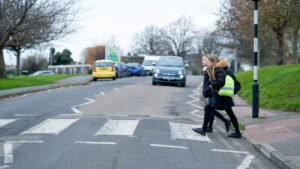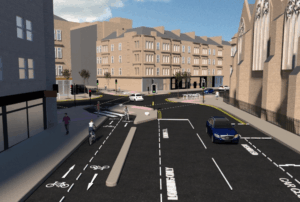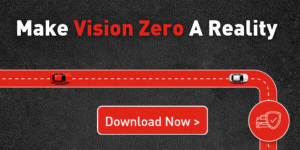Three new visuals have been released by Hull City Council to showcase how a new cycle scheme planned for Preston Road could look ahead of a six-week public engagement exercise, which starts on Monday 3 June.
The council appointed Pell Frischmann Consulting Engineers Limited to design the scheme, following a successful bid to Active Travel England’s Active Travel Fund (ATF) in May 2023.
Securing feedback on the preliminary designs is the next milestone and will help the council’s contractor move to a detailed design phase, with the council aiming to go out to tender later this year and start on site in spring 2025.
The proposals include the installation of off-road cycle lanes along Preston Road on both sides of the road, between Southcoates Avenue and Marfleet Lane, parallel to the footways, providing separate facilities for both pedestrians and cyclists.
Similar to the cycle scheme planned for Freetown Way, cycle-optimised protected signals junctions, also known as CYCLOPS junctions, will also be introduced at Preston Road/Southcoates Avenue crossroads and Preston Road/Marfleet Lane crossroads.
There will also be some alterations to on-street parking at key locations, including the provision of additional parking to the east of Archbishop Sentamu Academy.
Councillor Mark Ieronimo, cabinet portfolio holder for transportation, roads and highways, said: “These new images really help bring to life the proposed design for this scheme, with the aim of enhancing the cycling facilities on Preston Road and, in turn, of promoting and encouraging more active travel.
“From speaking to our residents, and through responses to the wide-ranging traffic and travel survey, undertaken in the summer of 2022, we know that improving the city’s transport network is an important priority and that our residents want us to provide the facilities needed to support greater choice when it comes to how they travel.
“The six-week engagement exercise is your chance to view the preliminary designs and provide us with the feedback needed to progress with detailed designs. This is a key part of accepting the grant funding from Active Travel England.
“This scheme, and the other planned for Freetown Way, not only demonstrates this council’s commitment to providing the facilities needed to encourage more people to choose active and sustainable modes of travel, like cycling, but also to enhancing the city’s highways to make them safer for the benefit of all members of the travelling public.”
CYCLOPS junctions, or a cycle-optimised protected signals junction, are appearing more and more in cities and towns across the UK.
The unique design of the CYCLOPS junction completely separates pedestrians and cyclists from motor traffic at junctions, reducing the possibility of collisions or conflict.
Pedestrians are also able to get where they want to be in fewer stages with more space to wait than on other junction designs.
As well as minimising the number of potential signal phasing/stages to allow for movements around the junction, the CYCLOPS has other important benefits too.
These include:
- cyclist and pedestrian phases can run simultaneously
- pedestrian crossing times are shorter and closer to desire lines, including the potential for diagonal pedestrian crossings
- cyclists have protected right turn on a gentle radius and can filter left without signal control
- journey times for all modes navigating the junctions, including motor traffic, are not negatively affected.
There are two movement ‘rings’ around the junction. One ‘ring’ of the junction is a cycle lane, acting like a roundabout with signal-controlled crossings. This will allow those who cycle to cross over the junction or make right turns unrestricted by cars or foot traffic, creating a safe route to travel.
The other ‘ring’ of the junction is dedicated to pedestrians, with those walking and cycling getting the same green light signal in all directions at the same time, but on a separate ring of paths in the middle of the junction.
There are well-defined zebra crossings on each side of the junction to provide a safe place to cross the cycle lane for pedestrians.
All motorised traffic stops at the lights whilst cyclists and pedestrians have their green light signal.
Once pedestrians and cyclists have passed, motorised traffic will get the green light signal to continue driving and use the junction like normal.























